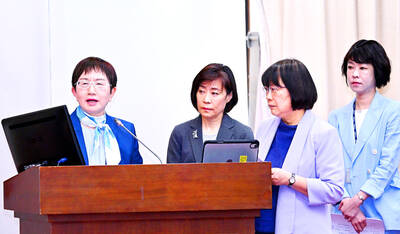A panel of leading computer scientists warned in a report issued last week that unless the US federal government significantly increased support for advanced research on supercomputing, the US would be unable to retain its lead on that technological front.
The panel of scientists, which was convened by the National Research Council, warned of a looming imbalance between hardware and software technology in high-performance computing.
"We are calling for a sustained and long-term investment to help develop advanced software and algorithms," said Steven Wallach, a computer designer at Chiaro Networks, a maker of an optical router for high-speed computing and a member of the panel.
The report, "Getting Up to Speed: The Future of Supercomputing," was based on an effort begun in 2002.
"Our situation has deteriorated during the past 10 years," said Susan Graham, a computer scientist at the University of California, Berkeley, who was co-chairwoman of the panel.
The authors of the report, which was prepared for the Energy Department, said they were recommending that the federal government spend US$140 million annually on new supercomputing technologies. The federal government currently spends about US$42 million each year, according to a recent report of the High End Computing Revitalization Task Force, a federal government working group.
"If we don't start doing something about this now, there will be nothing available in 10 years when we really need these systems," Graham said.
The BlueGene/L supercomputer from IBM was last week placed first on a list of the world's 500 fastest computers in a ranking announced at a high-performance-computing conference in Pittsburgh. The ranking is issued twice each year. The IBM machine, which is being installed at Lawrence Livermore National Laboratories in California, surpasses the speed set in 2002 by a Japanese supercomputer known as the Earth Simulator.
Overall, the Intel Corp consolidated its advantage in supercomputing. More than 320 systems on the top 500 list are based on Intel microprocessors, an increase from 287 Intel-based systems just six months ago.

‘SWASTICAR’: Tesla CEO Elon Musk’s close association with Donald Trump has prompted opponents to brand him a ‘Nazi’ and resulted in a dramatic drop in sales Demonstrators descended on Tesla Inc dealerships across the US, and in Europe and Canada on Saturday to protest company chief Elon Musk, who has amassed extraordinary power as a top adviser to US President Donald Trump. Waving signs with messages such as “Musk is stealing our money” and “Reclaim our country,” the protests largely took place peacefully following fiery episodes of vandalism on Tesla vehicles, dealerships and other facilities in recent weeks that US officials have denounced as terrorism. Hundreds rallied on Saturday outside the Tesla dealership in Manhattan. Some blasted Musk, the world’s richest man, while others demanded the shuttering of his

ADVERSARIES: The new list includes 11 entities in China and one in Taiwan, which is a local branch of Chinese cloud computing firm Inspur Group The US added dozens of entities to a trade blacklist on Tuesday, the US Department of Commerce said, in part to disrupt Beijing’s artificial intelligence (AI) and advanced computing capabilities. The action affects 80 entities from countries including China, the United Arab Emirates and Iran, with the commerce department citing their “activities contrary to US national security and foreign policy.” Those added to the “entity list” are restricted from obtaining US items and technologies without government authorization. “We will not allow adversaries to exploit American technology to bolster their own militaries and threaten American lives,” US Secretary of Commerce Howard Lutnick said. The entities

Minister of Finance Chuang Tsui-yun (莊翠雲) yesterday told lawmakers that she “would not speculate,” but a “response plan” has been prepared in case Taiwan is targeted by US President Donald Trump’s reciprocal tariffs, which are to be announced on Wednesday next week. The Trump administration, including US Secretary of the Treasury Scott Bessent, has said that much of the proposed reciprocal tariffs would focus on the 15 countries that have the highest trade surpluses with the US. Bessent has referred to those countries as the “dirty 15,” but has not named them. Last year, Taiwan’s US$73.9 billion trade surplus with the US

Prices of gasoline and diesel products at domestic gas stations are to fall NT$0.2 and NT$0.1 per liter respectively this week, even though international crude oil prices rose last week, CPC Corp, Taiwan (台灣中油) and Formosa Petrochemical Corp (台塑石化) said yesterday. International crude oil prices continued rising last week, as the US Energy Information Administration reported a larger-than-expected drop in US commercial crude oil inventories, CPC said in a statement. Based on the company’s floating oil price formula, the cost of crude oil rose 2.38 percent last week from a week earlier, it said. News that US President Donald Trump plans a “secondary